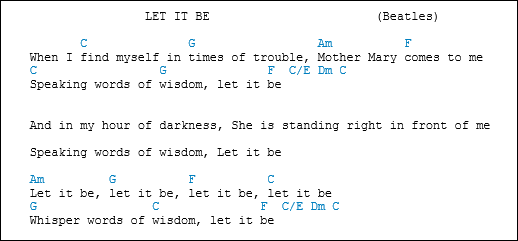Getting Started with Guitar
If you’re interested in learning guitar, you might be running into an enormous feeling of dread. How do you get started? What kind of guitar should you get?
Here’s a short guide that can hopefully help get you started.
Buying a Guitar
Guitars can get really expensive. But higher-end guitars end up being a matter of taste (both musically and aesthetically). For your first guitar, you don’t have an opinion, so there’s no need to splurge. After all, you might find out that you don’t end up liking guitar in the end.
For your first guitar, my suggestion is to start relatively cheap. You can get really nice guitars for under $200 (i.e.: your local Guitar Center), and they’ll last anybody for many years in the hobby. The guitar people at the local shops know how to play guitar, so you can even ask them to play the different guitars a bit so you can hear which ones sound nicest to your tastes. They are always really helpful - and if you go on a weeknight, you basically have their undivided attention :)
Also, remember that you won’t be the first one to come to the store with this conundrum. If you go in with a budget, they’ll really be able to help you find the guitar that’s best for you.
I watched a bunch of ‘Buying a new guitar’ YouTube videos, this one represents the situation pretty well: http://www.youtube.com/watch?v=iDz0W8UNgn4.
The one thing they don’t explicitly mention that you want to test with a guitar is making sure every note plays properly. Sometimes, they have issues where the notes at one end of the neck sound great, but as you go through the middle of the neck (or something), they’ll start sounding with a buzz. Sometimes, this is player fault. Sometimes, it’s just something that is due to being set up incorrectly (which can be resolved.) Sometimes, it’s a flaw in the guitar.
If a guitar has fret buzz before being set up by the store, it’s usually a bad sign. They may be able to fix the buzz, but might do so in a way that makes the guitar harder to play in the long run – for example, by raising all of the strings (which makes the guitar harder to play).
Learning to Play
Once you’ve got your brand new guitar (and maybe had it set up), the fun part begins!
Chords
The easiest way to start is to learn how to play guitar chords. These are patterns that you play on the neck of the guitar that sound nice when you strum all (or most) of the strings. YouTube has a lot of great tutorials. Once you start getting good at some, you can start to play along with songs you like - for example: http://www.youtube.com/results?search_query=%22let+it+be%22+guitar+chords. Print out a crib sheet of guitar chords, keep it nearby, and start practicing.
Tab
You can follow along with random YouTube users, but one common way to share musical knowledge is called Tablature - aka “Tab”. There is tons of it on the internet. It is usually written as the song’s lyrics, with the chords you need written over the word where you start to strum it:
Listen to songs, play along, and learn to sing along if you are so blessed :)
Keep on Growing
As you learn, it’s easy to get stuck in “bedroom guitar” mode, where you grind on songs alone, get stuck on things, and don’t know where to go next. A next great step is to get a guitar tutor. They are usually $30-$50 per hour, so you can take a lesson every week or two.
In the beginning, you can start with a teacher that is a generalist. Music stores often have recommendations on local tutors (or instructors that rent out space in the local shop), and that is a great place to start. Take trial lessons with a handful of teachers, and find the one that matches your learning style.
A good teacher should push you hard enough that you need to spend a couple of hours on practice for each hour of instruction. If not, you’re just paying to listen to them talk. If that’s happening, there are much more efficient ways to blow your money so go do that instead.
Once you get more accomplished, you might find you like some kinds of music more than others. If that’s the case, you can always specialize - so you can find teachers that focus on Jazz, Classical guitar, Rock, or whatever else interests you.
At some point, tablature isn’t descriptive enough - and your teacher will introduce you to standard music notation.
Standard music notation is challenging to learn at first, but does open your world to a whole new kind of music sharing and knowledge.
In the end, the biggest requirement for growth is practice. If you wonder how long it’ll take you to become a master shredder, you’d better become deeply familiar with the 10,000 hour rule.


